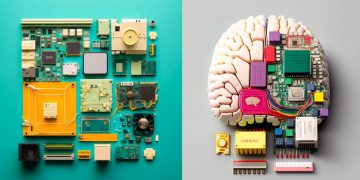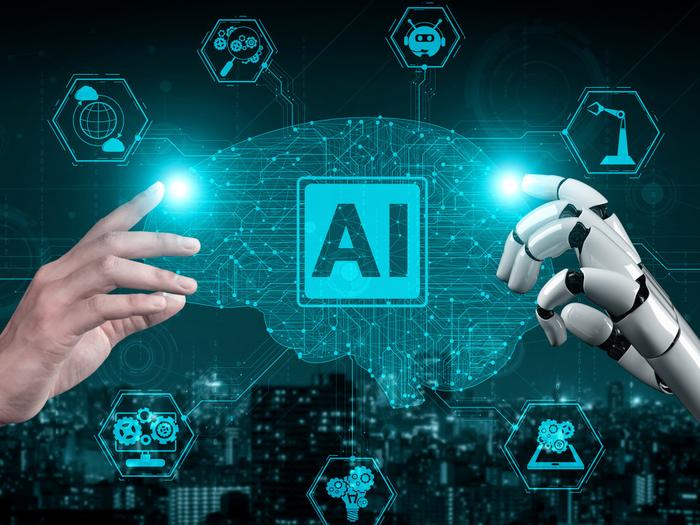We stand at the cusp of a paradigm shift, witnessing the profound disruption brought about by the Fourth Industrial Revolution, spearheaded by technologies such as Artificial Intelligence (AI). The future, it seems, is only limited by the expanse of our imagination. Capital markets have echoed this sentiment, as evidenced by the 24% surge in the China Securities Index of Artificial Intelligence (CSI AI Index) from February to March 2024, significantly outperforming the broader market. Yet, given the rapid pace of AI’s evolution and the robust support it enjoys, the potential seems boundless.
Policy Momentum: ‘AI+’ Gradually Taking Root
Since the turn of the year, the concept of “new-quality productivity” has been prominently featured in news headlines, outlining the direction and momentum for the nation’s economic development. At the forefront of this narrative stands AI, which has garnered significant attention. Notably, the phrase “AI+” was prominently featured in the government work report during the annual Two Sessions meeting, marking a pivotal moment.
A historical perspective reveals that innovative formulations related to technology in pivotal conferences often carry profound strategic implications, driving industrial transformation and upgrading at various stages. Beyond strategic directives from the top echelons, concrete support measures are also emerging.
Recently, the State-owned Assets Supervision and Administration Committee (SASAC) of the State Council convened a special forum on “AI Empowerment and Industrial Renewal,” urging central enterprises to “accelerate the development of AI.” The forum emphasized the need for central enterprises to leverage their strengths, forge AI clusters, and harness their large-scale demand, comprehensive industrial support, and diverse application scenarios to spearhead the integration of AI into traditional industries. This marks the first time SASAC has convened a dedicated forum to deploy strategies for AI development within central enterprises, underscoring its importance.
Furthermore, a press conference by the State Council Information Office announced plans to launch the “AI+” initiative, fostering deep integration between AI and the real economy, accelerating AI’s role in propelling a new era of industrialization. In line with the Implementation Opinions on Innovative Development of Manufacturing Piloting, efforts will focus on enhancing modern pilot capabilities and establishing new national manufacturing innovation centers and experimental verification platforms. Additionally, based on the existing 178 national high-tech zones and 45 national advanced manufacturing clusters, national new-type industrialization demonstration zones will be established, including initiatives to foster and upgrade advanced manufacturing clusters, empowering national high-tech zones to play a more significant role in advancing high-tech, achieving industrialization, and fostering new-quality productivity.
Policies Expand Support Across Data, Algorithms, and Computing Power
From data elements and data exchanges to algorithms and computing power, the policy landscape continues to broaden its support for AI, underscoring the government’s commitment.
Embracing the Fourth Industrial Revolution: Trillion-Dollar Opportunities Ahead
Following the demographic dividend and real estate boom, the technological dividend is emerging as the next frontier, with AI occupying a pivotal position. As overseas markets enter the stage of commercialization, with breakthroughs like ChatGPT and Midjourney, software giants like Microsoft, Adobe, Salesforce, and Zoom are rapidly launching AI-powered products. Domestic efforts in computing power, large models, and applications are not far behind, making 2024 the “Year of AI Applications,” with sectoral opportunities poised to persist throughout the year.
In March, the domestic AI landscape was dominated by the release of Kimi, an intelligent assistant from Moonshot that achieved a breakthrough in long-context window technology, supporting up to 2 million words of seamless context. According to Galaxy Securities research, Kimi’s rapid iteration has accelerated the implementation of AI applications, foreshadowing the emergence of more large models with long-text capabilities, including Baidu’s ERNIE Bot and Alibaba’s Tongyi Qianwen. Additionally, the unveiling of the first multi-modal financial large model with 100 billion parameters by Jieyue Xingchen signals the dawn of the “long-text era” for large models.
Innovations in AI-powered sectors like agriculture, manufacturing, and education continue to proliferate, heralding the dawn of a new decade of technological and industrial revolution. According to the “New Generation Artificial Intelligence Development Plan” issued by the State Council, the AI industry is projected to reach a scale exceeding trillions of yuan, underscoring the immense potential awaiting exploitation.
















































Discussion about this post